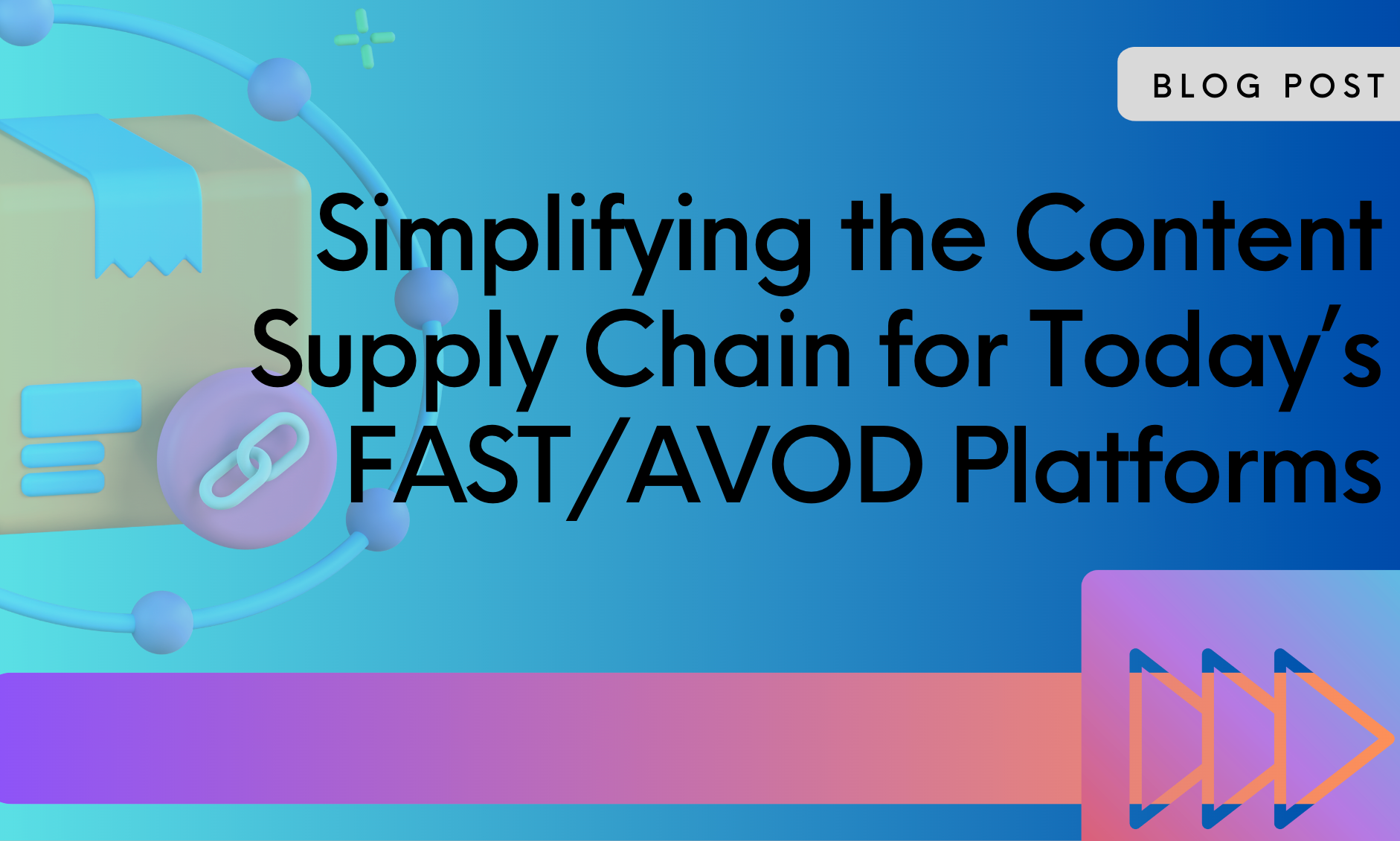
In the ever-evolving world of streaming, the rush to acquire and retain viewers has led to the exponential growth of FAST (Free Ad-Supported Streaming Television) and AVOD (Advertising-Based Video On Demand) platforms. According to Statista, the number of AVOD/FAST users is expected to hit 3.4 billion users by 2027. Although these platforms present an incredible opportunity to engage viewers with content, their success hinges on a streamlined and efficient content supply chain. Acquiring, managing, and publishing content on these platforms comes with its own set of challenges – but these challenges can be simplified to ensure seamless content operations in the world of FAST/AVOD.
The Challenges
-
Enhancing Content Workflows
One of the cornerstones of FAST/AVOD platforms is user interface and advertising technology, which can sometimes overshadow the importance of robust content workflows. The process relies heavily on disparate spreadsheets, which can lead to potential inefficiencies. To optimize the content supply chain, it’s essential to elevate content workflows to the same level of prominence as user experience and advertising technology. This means investing in tools that automate and streamline content-related processes, ensuring a seamless flow from acquisition to publication.
-
Empowering Business Users
Content status visibility is a primary concern in the content supply chain for FAST/AVOD platforms. Business users often find themselves in the dark until well into the content processing pipeline. To overcome this challenge, platforms need to provide real-time visibility into the content status at various stages. This transparency empowers business users to make informed decisions and facilitates effective coordination between teams involved in content acquisition and publication.
-
Coordinating the Content Pipeline
The success of FAST/AVOD platforms also relies on offering a wide range of content options to viewers. However, managing the high volumes of titles being processed can quickly become overwhelming. Coordinating the availability of content for selection of channels can become a complex task.
To address this issue, platforms need to implement strategies and tools that streamline content selection processes, like employing intelligent algorithms to recommend content based on viewer preferences – thus simplifying the coordination of available titles.
-
Alignment with Vendors
In the fast-paced world of content delivery, miscommunication can lead to delivery of incorrect content or inaccurate windows. Coordination with content vendors is crucial to ensure that the content provided aligns with the platform’s requirements. Implementing a system that enables seamless communication between vendors and the platform, along with automated validation checks, can help mitigate these coordination challenges.
The Solution: Streamlined and Centralized Management
To conquer these challenges and establish a robust content supply chain, platforms must adopt a holistic solution that simplifies processes from contracts to availability to asset management. This solution involves a centralized platform that aggregates avails in various formats and enriches them with metadata. This empowers the acquisition team to make informed content licensing decisions and enables platforms to seamlessly place orders for assets across multiple lab partners and track real-time asset statuses.
The Benefits: Scaling, Transparency, and Collaboration
Implementing such a streamlined content supply chain solution brings forth numerous benefits and business values:
- Scalability: The platform can efficiently handle rapid growth and manage an extensive volume of avails from content providers.
- Transparency: Centralized management with automated workflows enhances transparency, allowing different teams to collaborate effectively and make timely decisions.
- Collaboration: Back-office workflows are consolidated, and direct integration with lab partners and MAM (Media Asset Management) systems ensures smooth collaboration.
- Efficiency: The entire content supply chain becomes more efficient, reducing lag time and improving overall content delivery.
By focusing on streamlined processes, transparency, and collaboration, FAST/AVOD platforms can overcome the majority of challenges within the content supply chain. This is enabled through implementing a centralized technology solution which addresses these challenges head-on and allows platforms to harness the power of content to succeed in the competitive streaming landscape.
If you need help with your FAST/AVOD supply chain, content performance tracking and revenue reporting, visit https://whipmedia.com/fast-solutions/
